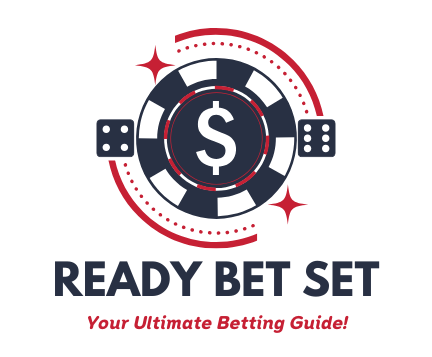In today’s fast-paced world, effective strategies are vital for success. The “21 strategy” offers a unique approach that can transform how we tackle challenges and seize opportunities. By focusing on 21 key principles, we can streamline our decision-making processes and enhance our overall performance.
This strategy isn’t just about numbers; it’s about creating a framework that fosters innovation and collaboration. Whether we’re looking to improve our personal goals or drive business growth, understanding and implementing the 21 strategy can lead to significant breakthroughs. Let’s dive into how these principles can empower us to achieve our objectives and navigate complexities with confidence.
Understanding the Basics of Blackjack
Blackjack, often called 21, embodies a blend of strategy and luck. Our goal in this section is to detail the fundamental elements of the game and what we need to know to succeed when playing.
The Objective of Winning at 21
The objective in blackjack involves achieving a hand value closer to 21 than the dealer’s hand while avoiding exceeding 21. Each player receives two cards, while the dealer holds two cards, one face up and one face down, known as the dealer’s face down card. The dealer’s hand is crucial in determining the outcome, as players must strategically decide whether to hit or stand based on the dealer’s visible card. To win, we must beat the dealer’s total without going bust, or exceeding 21.
Card Values in Blackjack
Understanding card values is crucial for gameplay. Here’s a simple breakdown:
| Card Type | Value |
|---|---|
| Number Cards (2-10) | Face value |
| Face Cards | 10 |
| Aces | 1 or 11 |
Aces can be versatile, allowing flexibility in hand values. For example, holding an Ace with a 9 creates either a total of 10 or 20, giving us strategic options.
Basic Rules of the Game
Blackjack follows specific rules that dictate how we play. We start by placing our bets. The dealer deals two cards to each participant. Players play their hands before the dealer. We can choose to hit (take another card), stand (keep our total), double down (double the bet with one additional card), or split pairs (create two hands). These choices are influenced by the dealer’s face-up card.
The dealer’s hand includes a face-down card, which is not visible to the players and plays a critical role in determining the dealer’s actions during the game.
These choices influence the odds of winning. Players must decide based on their total and the dealer’s visible card. Familiarity with these rules enhances our decision-making skills.
Strategy and Tactics

Employing a strategy significantly increases our chances of winning. The basic strategy suggests the optimal move depending on our hand and the dealer’s upcard. Key tactics include:
- Hitting when hand value is low, such as 12 and below.
- Standing with high hand values, like 17 and above.
- Doubling down with pairs of Aces or eights.
- Splitting pairs of Aces and eights to make two strong hands.
For a deeper understanding of effective strategies, refer to articles from trusted sources like Casino.org and PokerNews.
Common Variations of 21
Blackjack games come in various forms. Different blackjack games can significantly affect the player’s strategy, as variations in rules such as doubling, surrendering, and payout ratios can enhance the player’s chances of winning.
Each variation offers unique rules and strategies:
- Classic Blackjack: The original game format involving one or more decks.
- European Blackjack: Variations in dealer rules and player options.
- Spanish 21: Gameplay features the removal of 10s, changing strategy dynamics.
Understanding differences helps us adjust our strategies accordingly, allowing us to adapt to different game styles effectively.
Whether playing for fun or at a casino, mastering the basics of blackjack can lead to more informed decisions and potentially improve our outcomes in this exciting game.
Blackjack Rules and Terminology
Blackjack combines strategy with luck. Understanding the rules and terminology is essential for our success at the table.
Understanding Card Values
Each card in Blackjack has a specific value. The values are as follows:
| Card Type | Value |
|---|---|
| Numbered Cards | Worth their face value (2 to 10) |
| Face Cards | Worth 10 |
| Aces | Worth 1 or 11, depending on benefit |
Players must use Aces strategically, as they can adapt their value based on the current hand.
Betting Fundamentals
Before we start the game, we must place our initial bets in chips in the designated area. Here’s what we should know:
- Minimum bets typically range from $2 to $500.
- Maximum betting limits vary by casino and table.
- The dealer shuffles the deck thoroughly, ensuring card randomness.
Basic Player Actions
When playing Blackjack, several player actions determine our approach:
- Hit: We draw another card to improve our hand.
- To signal a hit, we can scrape cards against the table or tap it with a finger.
- Stand: We choose not to draw any more cards, hoping our hand beats the dealer’s.
- To indicate a stand, we can slide cards under our chips or wave our hand horizontally.
- Double Down: We may double our initial bet and take only one additional card.
- This option often works best with a hard 9, 10, or 11, especially when the dealer’s face up card is weak.
Importance of Strategy
Using effective strategies, like the “21 strategy,” enhances our gameplay. Knowing the card values and understanding betting mechanics shapes our decisions, allowing us to navigate the game confidently. By mastering these elements, we increase our chances of winning against the dealer.
Understanding rules and terminology fundamentally strengthens our Blackjack experience. Let’s use this knowledge to our advantage.
Mastering Basic Strategy
We focus on utilizing basic strategy in blackjack to maximize our chances of winning. This approach emphasizes informed decision-making based on statistical analysis, significantly lowering the house edge.
Understanding Basic Strategy Rules
Basic strategy consists of guidelines dictating optimal plays based on our hand and the dealer’s upcard. It’s a mathematically proven method developed from probability theory and simulations. By applying these rules, we can make statistically sound decisions, which reduces the house advantage to less than 1%. Resources such as BlackjackInfo provide comprehensive charts and guides for mastering this strategy. Utilizing blackjack charts is crucial for forming a basic strategy, as they offer detailed guidance for various types of blackjack games.
Essential Strategy Components
Several key components form the foundation of basic strategy:
- Player’s Hand: We analyze our hand value to decide whether to hit, stand, double down, or split.
- Dealer’s Upcard: We adjust strategy based on the visible card of the dealer. If the dealer shows a weak card, such as 2 through 6, we play even more aggressively, aiming to get closer to 21 than the dealer’s hand without exceeding it.
Basic Strategy Decision Table
Utilizing a decision table aids in quickly determining our optimal moves.
| Player Hand | Dealer’s Upcard | Action |
|---|---|---|
| 8 or less | Any | Hit |
| 9 | 3 through 6 | Double Down |
| 10 | 2 through 9 | Double Down |
| 11 | 2 through 10 | Double Down |
| 12 | 4 through 6 | Stand |
| 16 | 2 through 6 | Stand |
Adapting Strategy Based on Hand Value

We adapt our strategy based on the specific value of our hand. If we possess a soft hand (containing an Ace valued as 11), we adopt a more aggressive stance. For instance, with a soft 17 (A, 6), we should double down against a dealer’s weak upcard.
Conversely, hard hands (without an Ace) require cautious play to avoid busting. A hand of 12 against a dealer showing a 4 necessitates standing. This selective approach minimizes risk while focusing on maximizing returns.
Learning and Mastering Basic Strategy
We enhance our blackjack skills through consistent practice and study. Numerous online resources offer simulations and games designed to reinforce the application of basic strategy. Websites like Wizard of Odds can be invaluable for understanding complex hands and strategies.
By mastering these fundamental principles, we position ourselves effectively against the dealer. Utilizing a combination of informed decisions and strategic adaptiveness, we significantly improve our potential for success in blackjack.
Using Blackjack Strategy Charts
Blackjack strategy charts play a crucial role in making optimal decisions during gameplay. We utilize these charts to reduce the house edge and enhance our chances of winning by examining our hand against the dealer’s upcard.
Utilizing Basic Strategy Charts
Blackjack charts provide visual guides that indicate the best move based on our hand and the dealer’s visible card. Developed through probability theory and simulations, these charts suggest whether to hit, stand, double down, or split. Following the chart recommendations helps us make informed decisions that minimize losses.
Chart Layout Overview
A typical blackjack strategy chart consists of two main components:
| Player Hand Value | Dealer Upcard |
|---|---|
| 5-8 | H |
| 9 | D, H (3,4,5,6) |
| 10 | D, H (2-9) |
| 11 | D |
| 12 | S (4-6), H (2,3,7-A) |
| 13-16 | S (3-6), H (2, 7-A) |
| 17+ | S |
The leftmost vertical column lists the player’s hand value, while the top row details the dealer’s upcard. We analyze this layout to determine our next action quickly.
Interpreting Chart Symbols
Understanding the symbols used in the chart is vital for effective use. Here are the most common indicators:
- H: Hit – Take an additional card.
- S: Stand – Maintain the current hand.
- D: Double Down – Double the bet and take one more card.
- SP: Split – Divide a pair into two separate hands.
In multi-deck games, additional symbols apply:
- DH: Double Down if allowed, else Hit.
- RM: Surrender if permitted, otherwise Hit.
- RS: Surrender if allowed, otherwise Stand.
We must familiarize ourselves with these symbols to navigate the chart confidently.
Applying Strategy in Real Gameplay
During a game, we can reference the strategy chart whenever uncertain about our next move. By identifying our hand value and the dealer’s face up card, we quickly locate the corresponding cell on the chart. This process makes decision-making straightforward, ensuring that our choices remain optimal under varying circumstances.
Utilizing strategy charts effectively enhances our gameplay proficiency. Regular practice with these charts cements our understanding and can lead to improved outcomes at the blackjack table.
Additional Resources
Advanced Blackjack Strategies
Advanced strategies elevate our blackjack game, minimizing the house edge and sometimes even giving us the upper hand against the dealer. Understanding these strategies enhances our decision-making, improving our chances of winning.
Card Counting and Optimal Techniques
Card counting increases our advantage by tracking high and low cards dealt. This method allows us to estimate the remaining cards in the deck, influencing our gameplay decisions. Employing systems like Hi-Lo assigns values to cards: high cards receive -1, neutral cards 0, and low cards +1.
Perfect strategy merges basic strategy with card counting. It helps us make informed choices by combining probabilities and statistics. Mastering this approach requires extensive practice, but it significantly improves our chances of beating the house.
Managing Our Bankroll
Effective bankroll management plays a pivotal role in our blackjack strategies. We should set a budget before playing, ensuring we’re disciplined in our betting behavior. Here are key practices to follow:
- Establish Limits: Create win and loss limits to control expenditure.
- Consistent Betting: Use flat betting to maintain a steady approach.
- Adjust Bets: Scale bets based on the count, increasing during positive counts.
Understanding Table Rules
Familiarity with the specific rules of the blackjack table enhances our strategic play. Rules can differ based on casinos or game variations. Knowing these allows us to adapt our strategies effectively. Here are common elements to consider:
| Table Rules | Description |
|---|---|
| Dealer Stands Soft 17 | Dealer stands on soft 17 (Ace-6) or higher. |
| Doubling Options | Opportunities to double down after any two cards. |
| Splitting Rules | Limits on the number of splits or resplit options. |
Practice and Resources
Regular practice solidifies our understanding of blackjack strategies. Utilizing online simulators or apps offers valuable experience without financial risk. Resources for learning effective strategies include:
- Books: “Blackjack Blueprint” by Rick Blaine for strategy insights.
- Websites: Online forums and tutorial sites that provide tips and guidance.
Investing time in learning and practicing these strategies maximizes our performance and enjoyment of the game.
Play Blackjack with Confidence
Playing Blackjack requires both strategy and confidence. Understanding key strategies enables us to maximize our winning potential while enjoying the game.
Essential Strategies for Winning at Blackjack
- Understand Basic Strategy: Familiarize ourselves with the essential principles of Blackjack strategy to make informed moves.
- Utilize Strategy Charts: Refer to strategy charts for the best decisions based on our hand and the dealer’s upcard.
- Avoid Insurance Bets: Don’t take insurance or even money as these bets typically carry a higher house edge.
- Properly Split and Double Down: Always split Aces and 8s, and refrain from splitting 5s or 10s. Double down on 11, 10, or 9 when the dealer shows a weak card.
- Know When to Stand: Stand on a soft 18 if the dealer’s upcard is 7 or higher. Practicing these strategies in online blackjack can significantly improve your skills and gameplay experience.
Managing Your Bankroll Effectively
Effective bankroll management is crucial. Set a budget for gaming sessions and stick to it. Here are some tips for managing our finances:
| Strategy | Description |
|---|---|
| Set a Budget | Determine the total amount we are willing to risk. |
| Limit Per Hand | Predetermine the amount we will stake on each hand. |
| Avoid Chasing Losses | Resist the urge to bet beyond our limits after a loss. |
Staying Disciplined at the Table
Discipline enhances our gameplay. Adhere to our strategy and resist impulsive decisions. Set personal limits for winning and losing sessions, leaving the table when necessary. Developing a focused mindset prevents emotional play and leads to better outcomes.
Practicing to Improve Skills
Regular practice helps us refine our skills. Utilize online simulators and Blackjack apps for practice. These tools allow us to experiment with different strategies without financial risk. Study resources from reputable sources, such as The Wizard of Odds or Blackjack Apprenticeship, to deepen our understanding.
Understanding Game Variations
Different Blackjack variations can affect our strategies. Each game may have unique rules, such as the number of decks used or dealer rules. Familiarizing ourselves with these differences ensures we adapt our strategy accordingly. Knowing whether the dealer stands on soft 17 or allows late surrender can influence our odds.
Implementing these strategies empowers us to play Blackjack with confidence. By mastering the game’s fundamentals and continually seeking improvement, we position ourselves for success at the table.
Conclusion
The 21 strategy transforms decision-making in various fields. These principles leverage deep tech and third-wave AI, enabling more effective responses in areas like supply chain management and investment decisions.
Key Concepts of 21 Strategy
- AI and Deep Tech Integration: 21 strategies utilize advanced technology for superior decision-making. These tools enhance the speed and accuracy of insights, helping businesses compete effectively.
- Data-Driven Approaches: We apply data analytics to refine tactics. For instance, businesses employing these strategies can analyze market trends and consumer behavior to inform decisions.
- Adaptive Learning Mechanisms: Continuous learning allows strategies to evolve. By monitoring outcomes, organizations can adjust tactics promptly, ensuring that decision-making aligns with the latest data.
Implementation Steps for 21 Strategy
Implementing 21 strategies involves structured procedures that can be tailored to specific contexts. Here’s an overview of essential steps:
| Step | Description |
|---|---|
| 1 | Define objectives and key performance indicators. |
| 2 | Collect and analyze relevant data streams. |
| 3 | Utilize AI tools to assess outcomes in real-time. |
| 4 | Adjust strategies based on performance metrics. |
| 5 | Foster collaboration among team members to enhance insight sharing. |
Next Steps for Effective Application
- Apply Basic Strategy: Regularly practice foundational strategies and reference strategy charts for real-time applications.
- Explore Advanced Techniques: Delve into card counting methods and perfect strategy options to elevate our approach.
- Engage with Community: Exchange tips and best practices with other players to enhance our skills and knowledge.
- Play with Confidence: Approach the game with assurance, leveraging everything learned to enjoy the experience fully.
Resources on 21 Strategy
Consider utilizing comprehensive resources to deepen our understanding of 21 strategies. External sources like Harvard Business Review and McKinsey & Company provide valuable insights into effective decision-making using advanced technologies and innovative strategies.
Understanding and implementing the 21 strategy positions us better for success in both personal and business contexts. We must continually refine our skills and adapt to changing environments to maximize our potential. By doing so, we not only enhance our abilities but also elevate our experiences.
For more in-depth insights, expert tips, and the latest news on betting and gambling, visit Ready Bet Set and stay ahead of the game.







Leave a Reply